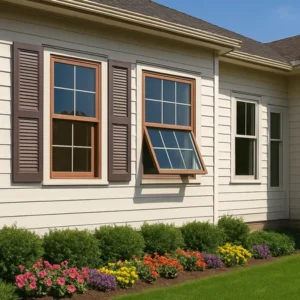Spring is in the air and the cooler weather is starting to become a thing of the past. As you know, Spring is the ultimate time to start working on your home improvements to make it a more beautiful and enjoyable place to live. Insulation is often an overlooked home improvement, but at Windows on Washington, we do not think it should be. There are countless benefits to insulating your home, from cost benefits, to comfort benefits and environmental benefits. When it comes to insulating your home, there are a variety of different methods for you to choose from. But how do you know what is best for your home? In this article, we will be answering six of the most important questions about blanket insulation.
1. What is Blanket Insulation?
Blanket insulation is one of the most commonly installed types of insulation. It comes in the form of batts or rolls. While batt insulation is available in pre-cut panels, roll insulation comes with and without facing, and rolls can be cut and trimmed to fit the space you are filling. The benefits of blanket insulation include a lower energy bill, year-round comfort by helping your home maintain a comfortable temperature, as well as noise reduction from outside and between the floors and different rooms. Batts and rolls are usually made of fiberglass, mineral wool, plastic fibers and natural fibers, such as cotton or sheep’s wool. You can also get batts with flame-resistant facing if the insulation area is going to be left exposed, such as in a basement.
2. Where Can Blanket Insulation be Installed?
Blanket insulation is usually installed in spaces without too many obstacles, such as pipes or wiring, fitted between beams, joists, and steel studs. You would most usually use blanket insulation in areas such as unfinished walls, floors and ceilings. It is fitted between studs and beams and is often used in new construction projects. You can also use blanket insulation as thermal insulation for areas inside your home. The attic is actually one of the most common places to install blanket insulation.
3. Does it Have a High R-Value?
The R-value of blanket insulation is highly dependent on how thick it is. Blanket insulation has an R-value of around R-2.9 to R-3.8 per inch of thickness. There are higher-performance fiberglass blanket insulation or batt insulation you can choose, which has an R-value that sits between R-3.7 and R-4.3 per inch of thickness, respectively.
4. The Pros of Blanket Insulation
There are plenty of pros to blanket insulation, including: it is affordable and less expensive than foam insulation; it is easy to install making it a great DIY project; it reduces noise from outside as well as between different rooms and floors inside your home; it is very energy efficient; and it is environmentally friendly.
5. The Cons of Blanket Insulation
As with anything, there are cons to blanket insulation too, including: it lacks the durability of other materials and tends to break down faster (meaning its thermal protection reduces over time); and, due to its lower R-value, if you are insulating an attic or crawl space that has already been built, you will need to ensure there is plenty of room for installation as you may need to add 10-12 inches of insulation to achieve the right amount of insulation.
6. Is Blanket Insulation Right for Your Home in Maryland or Virginia?
If you live in Maryland or Virginia, then blanket insulation is most likely an ideal and highly effective insulation material for your home. This is because both Maryland and Virginia generally experience mild weather across the year. However, the amount of blanket insulation you need will also depend on the type of heating and cooling system you have and the part of the house you plan on insulating. For example, if you want to insulate your attic and live in Virginia or Maryland, you would need an R-value of R-30 to R-60. If you want to insulate your floor, you would need an R-value of R-25. It is always best to speak with a professional home improvement contractor who will be able to assess your needs and if blanket insulation is right for you.
{{cta(‘3cc58be7-5e2b-4dcc-96df-87ec8228a676′,’justifycenter’)}}



